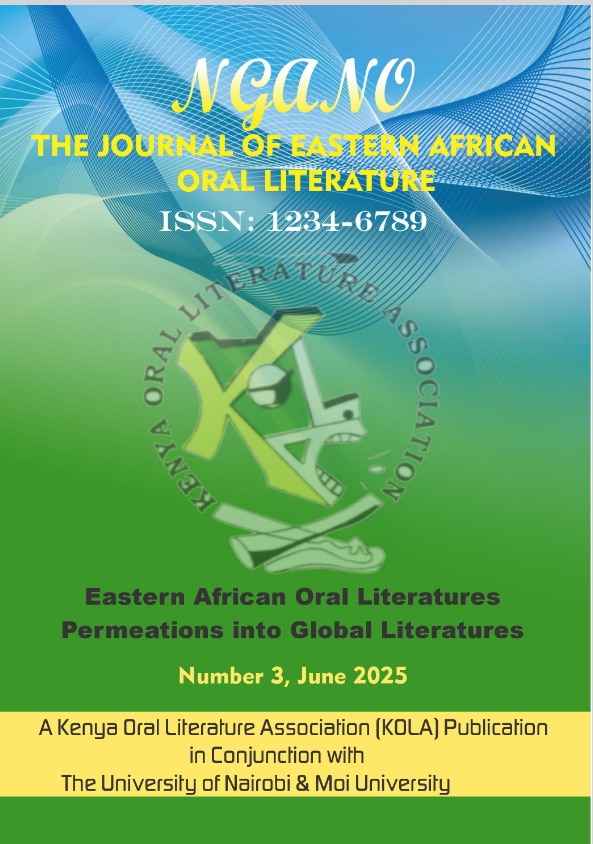The Folktale and Contemporary Theory: Psychoanalytic Reading of Three Borana Oral Narratives
Abstract
While numerous folktales and oral narratives have been collected and analysed in the lens of classical theories, few have undergone in-depth analytical interpretation using modern theories to unravel their symbolic meanings and psychological underpinnings. This paper employs psychoanalytic theoretical framework of Sigmund Freud to analyse three Borana folktales collected from Sololo in Northern Kenya. Through this interpretive lens, the oral narratives are explored as manifestations of the cultural psyche and collective unconscious, revealing complex themes surrounding incestuous desires, gender dynamics, societal taboos, and the navigation of cultural norms. The story of Chulle and her family delves into the subconscious anxieties and desires surrounding female sexuality, challenging patriarchal authority through symbolic representations of phallic power and femininity. The tale of the girl and the chewing stick explores premarital sex taboos, and the complexities of the children born out of wedlock. The narrative of the girl and the ogre confronts deeply rooted fears of rape, male aggression, and the violation of female bodily autonomy, employing the ogre as a symbolic embodiment of societal and cultural taboos. By decoding these symbolic elements and exploring the psychoanalytic dimensions, the paper unravels the intricate interplay between individual desires, societal expectations, and the metaphorical language used to give voice to often-repressed subjects. The analysis demonstrates the potential richness of applying psychoanalytic approach to interpreting African oral narratives, contributing to a deeper understanding of the profound truths about human nature, cultural values, and collective experiences encoded within these narratives.

